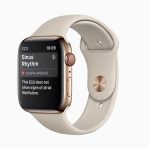Further, the network’s clinical portal has served in times of crisis as a backup system for health systems in the case of unexpected EHR outages or planned upgrades.
North Dakota Health Information Network, the state’s health information exchange, works to enhance statewide data connectivity to understand patients’ conditions better and speed up diagnoses for 1.2 million patients. The HIE helps rural providers share patient data.
NDHIN grants more than 1,700 users access to 11,000 patient records per month, giving smaller organizations the power to compete with larger health systems coordinating care. Beyond daily exchange activity, NDHIN has been able to automatically populate a patient autism registry, launch a formal smoking cessation program and create a statewide advance directives repository allowing providers to view all clinical documents through a single portal.
THE PROBLEM
Want to publish your own articles on DistilINFO Publications?
Send us an email, we will get in touch with you.
North Dakota’s healthcare system needs were common to many other states. Patients had multiple medical records located at various healthcare institutions. Access to the medical information was limited to each health system.
Assembling these multiple medical records into one longitudinal health record and making that information accessible to the right people at the right time was the primary goal. Provider access to this aggregated information could result in reduced costs, proper timely treatments, reduced redundant services and better patient outcomes.
PROPOSAL
The proposed solution was to centralize medical information through a federated or non-federated system, in part using technology from health IT vendor Orion Health. Centralizing the information in a single data store appeared to be the best long-term solution.
“Interfaces would be established to the various healthcare systems to bring data into the central data store as service was being delivered, so near real time,” said Eric Hieb, technology and operations manager at the NDHIN. “Receiving medical information from any point of service would allow for the creation of a cumulative longitudinal health record for each individual patient.”
A clinical portal accessible by healthcare providers would then allow access to this cumulative record. The HIE would also offer direct secure message services as an additional means of secure communication between providers.
MEETING THE CHALLENGE
An enterprise message broker communicates with all participating health systems’ EHRs to receive HL7 messages for ADT, ORU, MDM, etc. The messages interact with an enterprise master patient index to properly attribute medical information to the correct patient within the centralized data store.
The clinical portal became the visualization tool for the providers to interact with the longitudinal health record. Initial usage was by healthcare providers to discover medical information not in their own EHR for continuity of care and care coordination. Usage quickly grew to public health services to improve their by accessing healthcare information to identify disease burden and verify treatment and recovery for conditions of public health concern.
“Requests for additional information led to several system integrations, including with the state PDMP, NDIIS, public health reporting systems, medication history service from DrFirst, an image-exchange solution from eHealth Technologies, and participation in the Sequoia Project,” Hieb explained. “These additional integrations broadened the longitudinal health record information and reduced redundancy of services and healthcare cost.”
RESULTS
NDHIN monitors use of the clinical portal. Usage has steadily increased. The utilization reports trend the usage of specific services within the HIE to assist in determining [the] true value of the various components of the system.
“The clinical portal has served in times of crisis as a backup system for health systems in the case of unexpected EHR outages and even for planned major upgrades of EHRs resulting in long periods of downtime,” Hieb said. “The HIE has been incorporated into many health systems’ disaster recovery plans in recent years for continuity of operations.”
ADVICE FOR OTHERS
“Stakeholder engagement seems to be a major key to success,” Hieb advised. “Health systems are not just a source of medical information but rather true partners/stakeholders in the HIE in general. Creating governance that enables stakeholders to stay informed and have influence in the direction and services of the HIE is critical to HIE maturity and sustainability.”
Source: Healthcare IT News







